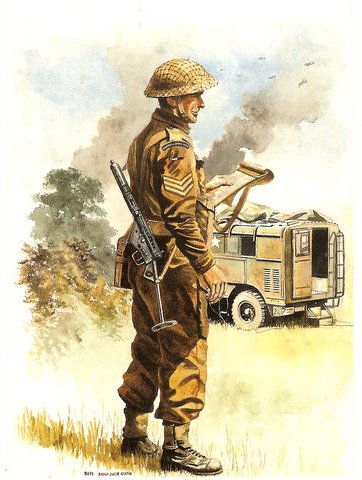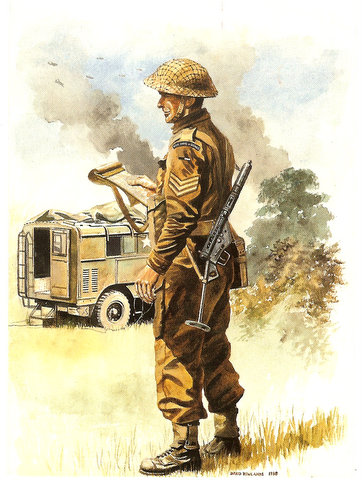 The Y Service 1939-1945
The Y Service 1939-1945
5 SWS in the Far East
1942 – 1945
The large majority of the Special Operators in 5 SWS joined the army in the middle of 1942 and after their training were posted overseas. They sailed on the Bittanic on the first leg of their journey overseas and arrived in Imphal in late 1943 when they were just about twenty years old.
The rest of the section from officers, N.C.O's and to the other ranks of various skills from the Intelligence Corps, drivers, cooks and other trades were older and had a far greater experience of life. The relationship of the Section Officers and all other ranks was at a very high level.
All the special Wireless Operators were proud to be doing the work they had been selected for and took a great pride in the work. This was vital as the conditions they worked under, with not only mechanical interference but also the interference to the (CW) Morse transmissions caused by the monsoon and electrical storms. It gave the operators a great deal of satisfaction to hear the receiving Japanese station asking for repetitions when they knew they had taken the intercept with 100% accuracy.
The operators took all the messages down on the red forms with carbon copies and the Log sheets were also in duplicate. The Log sheets were for all the traffic that passed between the Japanese stations whilst contact was being made or for any comments made either way during the course of sending a message. The information passed this way was often very useful as it sometimes contained plain language.
As operators sat waiting for their allocated stations to start up they would be waiting with a pencil sharpened at both ends as well as a number of spares, when traffic began there would be no time for pencil sharpeners!
During the Burma Campaign the H.R.O (R106) wireless sets were situated in many different kinds of places such as tents, bamboo huts (bashas) inside Lorries (trucks) and very rarely in houses (Rangoon).
The Japanese had great difficulty in continuously changing their codes due to the long distances between headquarters and the fighting units. When a change did take place messages would be sent in the new code with the recipient being unable to decode. The receiver would then ask for the message to be sent in the old code. This was a godsend to the code breakers.
In addition to intercept operations, from time to time an operator would be allocated to D/F (direction finding). This needed operators from three distances apart. When three or four readings were plotted on a map, the area in which they crossed gave them the area where the station was situated.
Where D/F bearings were needed on a number of stations they were able to call on other Special Wireless Units to take bearings at the same time. These stations were at places in the Arankan, Barrackpore and Colombo etc.
Knowing each Japanese call sign and being able to allocate this to an enemy unit was of vital importance to Corps Headquarters, especially when the enemy units were advancing or retreating. When this information was known from the bearings it could also be checked by local ‘spies' in the enemy territory.
When 5 Special Wireless arrived in Imphal it had been decided that they would be split into four shifts ‘A' ‘B' C' D' with five HRO wireless sets allocated to covering ‘Mongoose 8' (Japanese 18 Div) and five sets on ‘Mongoose 5' (Japanese 56 Div) with two sets on search. These enemy forces were in upper Burma on the borders of China near the New Burma Road (under construction from Ledo in Assam) and at the end of the Old Burma Road into the Yunnan Province in China.
They work on these Mongoose tasks was important for the operations of the Wingate Expedition where hundreds of Allied troops had been dropped in the rear of the Japanese forces. They were operating behind the lines for several months destroying bridges and railway lines. All food and supplies for these expeditions were supplied by air drops. Following the success of these operations the Allied forces on this front began to realise that the Japanese were not invincible.
At about that time the section was asked for volunteers to go behind the Japanese lines to intercept their land telephones lines. One shift to a man volunteered for this dangerous undertaking. They were told that they would be protected by a squad of six Gurkha soldiers on the mission.
By March 1944 they were also intercepting the Japanese 31 st Division which was planning to attack India together with the two Japanese Divisions the 33 rd and the 15 th The information obtained from these intercepts was vital to the Allied Command.